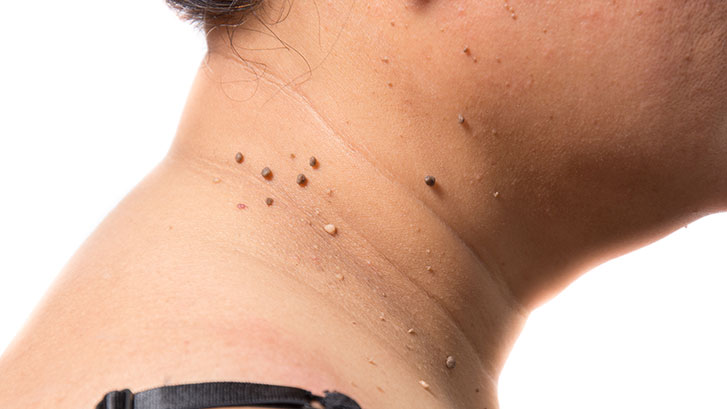
Skin… Rough. Dry. Smooth. Freckled… We’re
usually not too worried about
our skin until we see a mole.
Moles are common. Most people have at least 10
and continue developing new ones until the age of 40.
Moles are pink, tan or brown growths that
occur when pigments cells, known as melanocytes, grow in a cluster. They are
usually found on areas that are exposed to the sun.
Most moles are small, barely raised and
harmless. They rarely turn into melanoma, a type of skin cancer. However,
having more than 50 moles increases the risk of developing melanoma. This is
why you should see your doctor if you notice any changes in your moles.
A color change that affects the entire surface
of the mole could signify something serious.
Unfortunately, moles contain a lot of melanin
and are usually darker than the rest of the skin. This makes it difficult to
detect color changes.
A normal mole is pink, reddish, tan, brown or
just a black spot on the skin – commonly known as a beauty mark. If you notice
a mole that looks different from the rest, keep an eye on it. See a doctor if
the color keeps changing or if the mole turns an unusual color like blue or
white.
Change in
Size
Moles usually stay the same size. For
instance, if it was just a spot when you first noticed it, it should stay
roughly the same size.
If you have a mole that keeps getting bigger,
see a doctor. The same goes for moles that are larger than the diameter of a
pencil, which is about a quarter inch.
Change in
Shape
Moles tend to be round. If a mole has
irregular edges that are ragged, blurred or smudgy, see a doctor. The same goes
for moles that have a dry, hard, scaly or lumpy surface.
Itching,
Bleeding or Oozing
Moles can rub against your clothing and start
to itch. However, if the itching mole starts to crust, bleed or ooze, inform
your health care provider. Itching, bleeding and oozing could be a sign of
melanoma.

How to Check
Your Moles
Find a good mirror and examine all the areas
of your skin that are exposed to the sun. You should wear very little clothing
when doing this.
When examining your moles, keep the ABCDE’s in
mind: Asymmetry, Borders, Color, Diameter and Evolving.
According to the experts over at
skincancer.org, one person dies of melanoma every 54 minutes. So,
regularly screening your skin is a great cancer prevention habit.
Moles are very common and most are harmless. So please don’t worry. But monitor your
moles regularly and see your primary care provider as soon as possible if you
see any changes.
Helpful? Let us know what you think in the comment section below
Wooooow! Thanks for the enlightenment
ReplyDelete